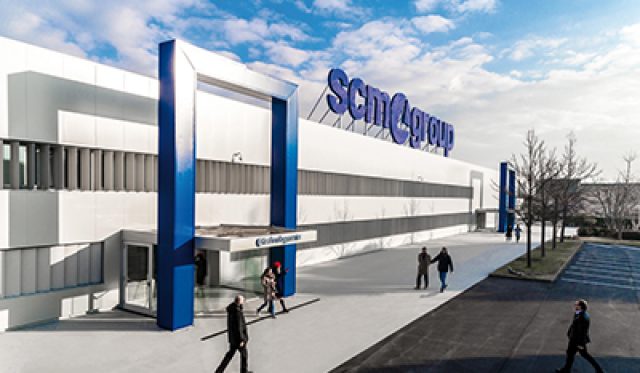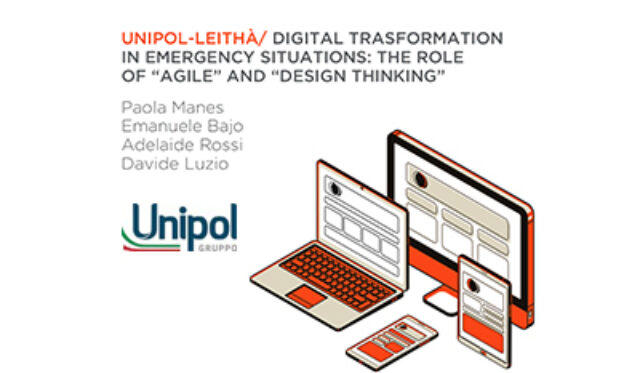The COVID-19 pandemic has brought unprecedented challenges to several sectors, including the insurance industry. In Italy, where the national lockdown has had a major impact on the industry, particularly affecting direct agent-client relationships, the need for digital transformation has become paramount. A particularly interesting case study in this regard is the one involving Leithà S.r.l., the center of excellence in Data Science and Computer Science within the Unipol Group.
Unipol Insurance Group, Italy’s leading Non Life insurer with direct revenues of €14.0 billion in 2019, faced a unique challenge during the pandemic. With 8.2 billion euros in the Non Life line of business (LoB) and 5.8 billion euros in the Life LoB, and more than 70 percent of Non Life premiums collected through direct interactions, measures to contain the SARS Co-V-2 virus posed a non-negligible threat to the traditional business model implemented by the company. In fact, although the Group’s 2019-2021 strategic plan had already provided for more than 200 million euros in IT investments, with 50 million euros earmarked for digitization and process optimization, the sudden onset of the pandemic necessitated an immediate response that could only be implemented through an innovative process.
Leithà, as part of the Unipol Group, was tasked with developing a digital tool that would enable remote communication between agents and customers. The urgency of the situation led to a debate within the company about which methodological approach to adopt. Two prominent methodologies emerged as contenders: “Agile” and “Design Thinking.”
In order to understand why the debate had to focus on these two project management methods, it may be helpful to briefly outline what they are and how they differ. The “Agile” method is characterized by an iterative development, in which solutions evolve through collaboration between cross-functional teams aiming to solve problems. The process is divided into “sprints,” each of which is a mini project that includes design, development, testing and delivery. Agile emphasizes step-by-step development and is primarily used in software development with technically highly skilled professionals.
“Design Thinking,” while rooted in Agile, focuses on constantly changing business and customer needs. It resembles an endless cycle of evaluation, prototyping and monitoring, treating users as collaborators, making sure that it is their feedback that drives the process. Unlike Agile, Design Thinking is a philosophy that focuses more on understanding and defining problems (problem finding) than on solving known problems (problem solving).
It should be emphasized that Agile and Design Thinking are not mutually exclusive, but can be combined. While Design Thinking focuses on the “why” of a problem, Agile works on the “how” of project implementation in the face of a known problem. In uncertain times, such as during the COVID-19 pandemic, Agile’s flexibility is invaluable, while Design Thinking offers the added value of user focus and has the advantage of challenging initial decisions based on emerging needs.
In the context of the Unipol-Leithà case study, the Agile approach was advocated by Filippo, head of Leithà’s Data Science Office, which focused on speed and accuracy. By focusing on continuous incremental fine-tunings of the chosen solution, it would solve a number of problems identified at the outset. In support of this approach, Filippo mentioned the success of the Caracas project, a digital tool for long-term car rentals developed precisely using the Agile method. The project had been launched less than a year after the start of the pilot phase, demonstrating the effectiveness of the method.
Instead, Francesco, head of the company’s Information Technology Department, supported the Design Thinking approach because it would allow a more fluid process, exploring and comparing new solutions based on user feedback. The example Francesco brought to support his view was the Vitruvius project, which had enabled the creation of a tool that facilitated communication between the company and its customers and had already proven to be extremely flexible and adaptable to different situations.
The debate between these two methodologies was not purely academic, but had practical implications for the project’s success. The Agile approach, with its emphasis on speed and accuracy, offered a clear path to a quick solution, while the Design Thinking approach, with its focus on user feedback and adaptability, promised a more nuanced and responsive tool that could evolve with the changing needs of the pandemic.
After thorough discussion and careful consideration of the unique challenges posed by the COVID-19 emergency, Giovanni, Leithà’s CEO, decided that Design Thinking was the best approach. This decision recognized the uncertainty of the times and the need to find the right problems to solve, rather than just solving predefined problems.
The Leithà team adapted the Vitruvius suite to the new needs, creating an easy and flexible tool to facilitate remote communication. Following the Design Thinking methodology, the team worked in 5-day iterations, quickly launching a pilot version of the new tool, called Vitruvius Now. The software was tested with several agencies and allowed them to communicate and exchange documents with clients using digital channels, particularly SMS, which allowed agents to tailor communications. After the release, the team defined and developed new use cases, covering areas such as customer retention, marketing, and digitization. Agencies involved in the pilot project were asked to provide feedback for continuous improvement.
The performance of the Vitruvius Now project was discussed at the September 2020 post-lockdown meeting, which was also an opportunity to reflect on the radical changes brought about by the pandemic, including the increased use of online and digital channels in the insurance industry. Results from the pilot project showed varying levels of usage, with significant click-through rates for communications and an increase in monthly policy renewals of up to 30 percent for agencies that had used the tool. The opportunity was also used to reflect valuably on methodological choices and their impact on the success of the project.
In conclusion, the case study of Leithà’s response to the COVID-19 pandemic provides significant insights into the importance of the method in the broader context of digital transformation. The carefully considered choice between Agile and Design Thinking illustrates the importance of aligning the approach to the specific problem and context. More broadly, this case study underscores the vital role of innovation, adaptability, and strategic thinking in the face of unexpected challenges and highlights how a responsive and reflection-based approach can lead to effective solutions, even in uncertain and rapidly changing times.



